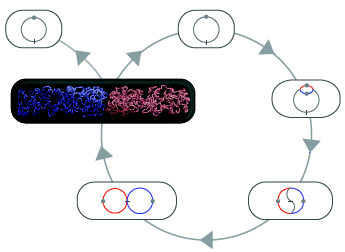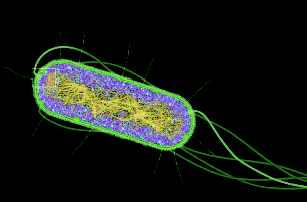PHYS 177/277. Physics of the Cell

The general theme of this course is how the cell does something. Our goal is to help advanced undergraduate and beginning graduate students understand what is like to develop new, quantitative ideas in interdisciplinary research between physical and biological sciences. As such, we will revisit some of the major ideas in biology by asking a series of questions through the eye of a physicist. These questions and related topics include
- Why biology?
- historical perspective
- systems biology vs. quantitative biology vs. physical biology vs. biological physics (or "exponents" vs. "prefactors")
- Introduction to experimental (physics) techniques in modern biology
- genetic engineering
- imaging: FRET, FRAP, TIRF, confocal, 2-photon, super-resolution, etc
- microfluidics
- single-molecule manipulation techniques
- How does the cell grow?
- universal growth laws
- cell-wall synthesis and the control of cell shape
- cell division as a morphological control
- How does the cell measure length?
- determining the center of the cell: reaction-diffusion system and Min oscillations
- protein localizations and sensing the curvature of space
- diffusion vs. active transportation by cytoskeleton
- cell-size control: how does the cell know its own size?
- How does the cell measure time?
- oscillators
- circadian clock
- "repressilator" and ideas from synthetic biology
- How does the cell coordinate growth and cell cycle?

- timing DNA replication
- timing of cell division
- organization and segregation of the chromosomes
- causality and coordination in space and time
- How does the cell respond to environmental cues?
- "random walks in biology": chemotaxis, thermotaxis, infotaxis
- ideas of robustness
- stress response
- Future: things we did not cover in this course
(there is A LOT to do in biology)
Text: This is a literature-based course with lecture notes. References will be introduced where relevant.
Prerequisites and target audience: PHYS 175/275. If you already have taken PHYS 140 (Statistical and Thermal Physics) or equivalent in your department (in physical or biological sciences or engineering), you are welcome to contact Prof. Suckjoon Jun for inquiry.
When & where: Tuesdays and Thursdays from 11 AM - 12:15 PM, Mayer Hall Addition, room 5623